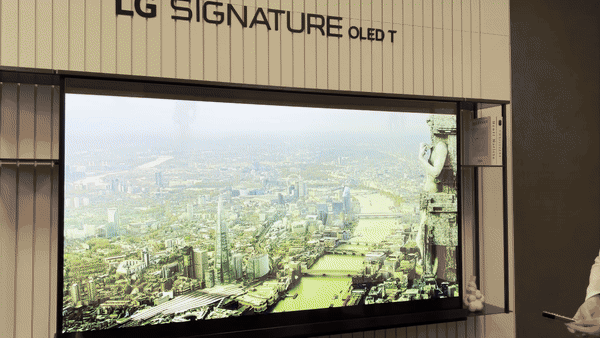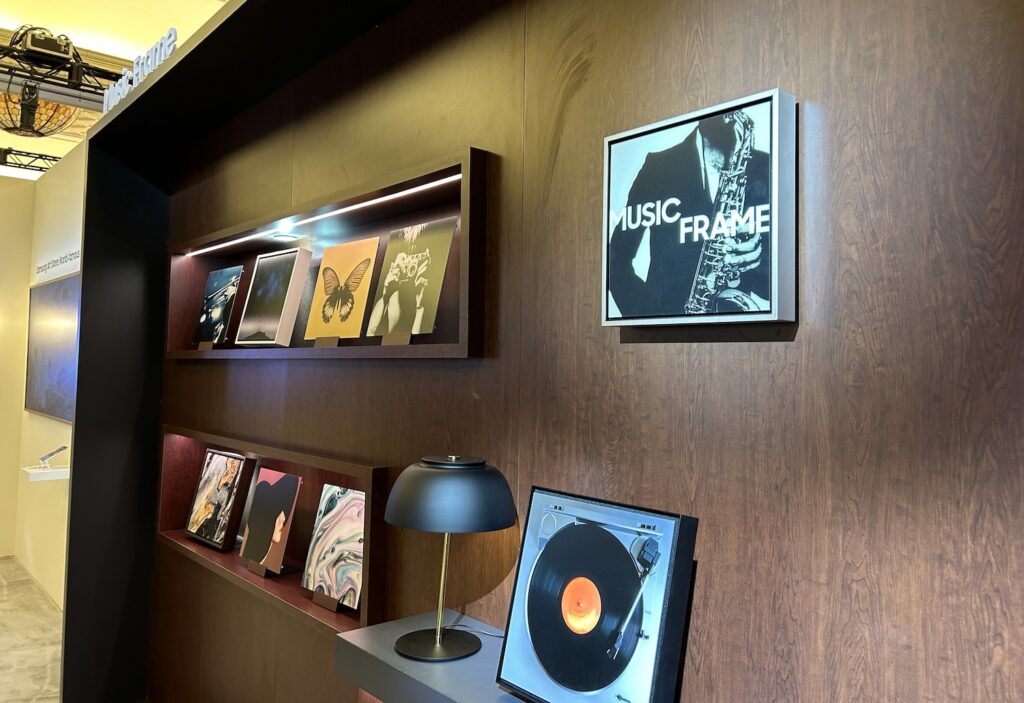There is SO MUCH noise that comes out of an event like CES. Concept gadgets of all shapes and sizes grasp for attention during the few days the consumer technology world is gathered in Las Vegas in some unimaginable ways. Regardless of how nifty and inspiring most things are here, it’s more likely than not that those types of products will never see the fluorescent lights inside your retail showrooms.
All that said, there’s still plenty that you should be paying attention to that comes out of CES. This year in particular, there were some major unveilings from the biggest of tech companies that could be true traffic drivers over the coming months. There were also some incredible concepts – realistic ones – that could shape the direction of certain industries over the next handful of years.
This year, the trendy thing to do was find new ways to blend technology into the spaces around you. More specifically, transparent displays – which have been demoed at CES for a few years now – seem to be closer to a retail reality.
Both LG and Samsung offered their own brand-specific takes on transparent displays.
LG showed off its LG Signature OLED T (for transparent) product. A fish tank-esque piece of equipment, the OLED T utilizes LGs Zero Connect Box to wirelessly stream content to the display, allowing the TV itself to stand free of cables and resemble a unique piece of furniture. Contrast film can be unrolled to give the display a traditional TV look, but when down the images on screen appear to almost float on the display.

Per on-site reviews of the OLED T demo, the picture, while strong, wasn’t quite up to the level of some of LG’s strongest OLED displays. So, it seems there will certainly be a little give-and-take with the OLED T.

Not to be outdone, Samsung showed off a transparent display of its own in the form of the first-ever transparent microLED screen. For its part, Samsung said that its transparent microLED display would produce not only a brighter and more vibrant image, but it claims that the microLED technology will also make it an easier display to see through compared to other transparent displays. To help showcase its technology, Samsung put one of its transparent displays in front of another non-transparent one that had a cityscape pictured. The transparent display then began a fireworks show on top of the cityscape.

What’s unique about these transparent displays – no matter the brand or posturing over who does it better – is the depth they provide to the pictures displayed. The fireworks in the Samsung demo appear to actually be happening in the city pictured. LG’s film-less demo showed fire rolling across the display, which actually made it seem like the inside of the box was in fact on fire.
The natural question around this type (or any) type of new technology is why do we need it, followed up by who’s going to want this? The ‘why’ has everything to do with what’s been happening in the design world over the past few years. There’s a clear and distinct desire to do something about the large black box that sits in the center of any living room. Designers and consumers alike are looking for ways to better utilize that space or hide the TV altogether. LG’s rollable TV of a few years ago, the Samsung Frame TV, these transparent displays – they all attempt to address the distaste of wasted space in the living room.
And there’s evidence that points to this being more than a fad. The aforementioned Samsung Frame TV has generated enough success for that brand that Samsung, at this CES, unveiled a speaker lineup inspired by the same concept. The Music Frame is a customizable speaker that resembles a picture frame on the wall but features built-in woofers along with intelligent audio-processing tech. It can pair with the latest Samsung TVs and soundbars or operate as a standalone speaker.

Circling back to the transparent displays, LG’s OLED Signature T is the only model that appears to have a target launch date within the 2024 calendar year. The other unknown is what these transparent displays will cost. Though, looking at previous advanced technology TV launches, a safe estimate might be within the five-figure range.
And that brings us to the latter question: Who’s going to want these displays? Early adopters, of course. Customers that can’t wait for the second generation of a new technology. They’re out there. They’re in your communities. And when something like this launches they’ll be the ones to search you out and find you.
Because, like every other major tech launch, this is something that needs to be experienced in person before the big purchase decision is made. And consumers will only get the best possible in-person experience from their local independent retailer.
This post was first published on Nationwide Marketing Group’s Independent Thinking blog.